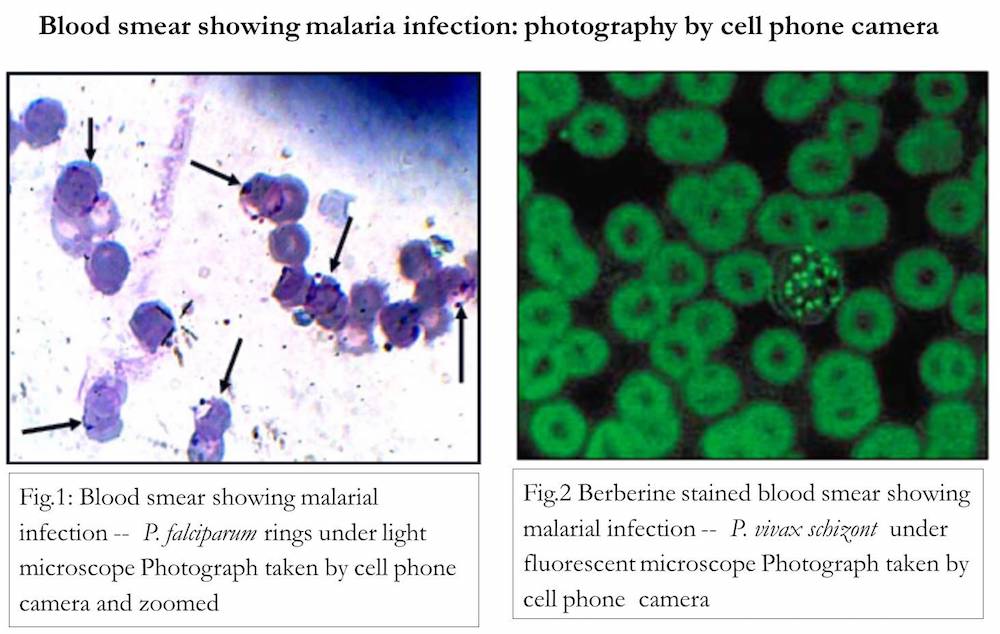The key to effective treatment and management of malaria in the field is rapid and accurate diagnosis. Under or over diagnosis eventually complicates the problem of malaria worldwide (total 212 million new cases and 429,000 malaria deaths in 2015)[1]. Despite advances viz. rapid diagnostics tests, fluorescent-based QBD-method and PCR are introduced, microscopy of the Geimsa-stained blood smear is the gold standard. Besides its cost-effectiveness, sensitivity and accuracy are merits of microscopic diagnosis. However, requirement of good quality microscopes and expert microscopist is a limitation, especially in rural part and small towns of developing countries.
The present application-based idea links widely available network of cell phone for rapid and accurate diagnosis of malaria in remote areas. Our team has first time explored this idea and the data has been published (Godse et.al 2007)[2]. Cell phone camera was used over the eye piece of the microscope to take several photographs of the blood smear of the suspicious RBCs (Fig. 1). These images can be beamed to the experts via the internet, along with a brief description of complaints. The expert can instantly reply as to the effective treatment, admission etc. An attempt were made for funding by applying under ‘Grand Challenge Exploration’ theme of Bills and Melinda Gates foundation as an independent application and also in response to the subsequent announcement for proposal under the same theme for ‘using phone in medical health’.
As per the World Bank Population data in 2016, there are 1170 miO cell phones and a dozen of cell phone operators in India covering total users up to 91% of the population.[3] This wide-spread network can be used for malaria diagnosis in Rural area. Around 72% of the Indian population leaves in 638000 villages. Simple microscopes can be made available, at the village/district levels under agencies like “Rural Health Mission of India”. An adopter can be designed compatible to a range of cell phones that can be fitted on a simple light microscope. Further advancement using fluorescent microscope (Fig. 2), or simple flodscope; origamy-based microscope[4] may be considered. Such a facility available at a centralized place such as Public Health Centres (25308 as on 2015)5 or sub-centres (153655 as on 2015)[5] can be linked with experts.
References:
1. WHO, Fact Sheet: World Malaria Report 2016 http://www.who.int/malaria/media/world-malaria-report-2016/en/
2. Godse CS, Patkar S, Nabar NS, Amonkar SJ, Vaidya RA, Raut AA, Vaidya AB. JK Science Medical Journal 2008, 10:155-156
3. World Bank Population Data". World Bank. Retrieved 8 April 2016. https://en.wikipedia.org/wiki/List_of_countries_by_number_of_Mobile phone_phones_in_use
4. JS. Cybulski, J Clements , M Prakash PLOS ONE, 2014, 9(6):e98781
5. Rural Health Statistics; Government of India Ministry of Health and Family Welfare Statistics Division 2014-15
Like this entry?
-
About the Entrant
- Name:Chhaya Godse
- Type of entry:teamTeam members:Chhaya S Godse Rama A Vaidya Ashok DB Vaidya
- Software used for this entry:No
- Patent status:none

